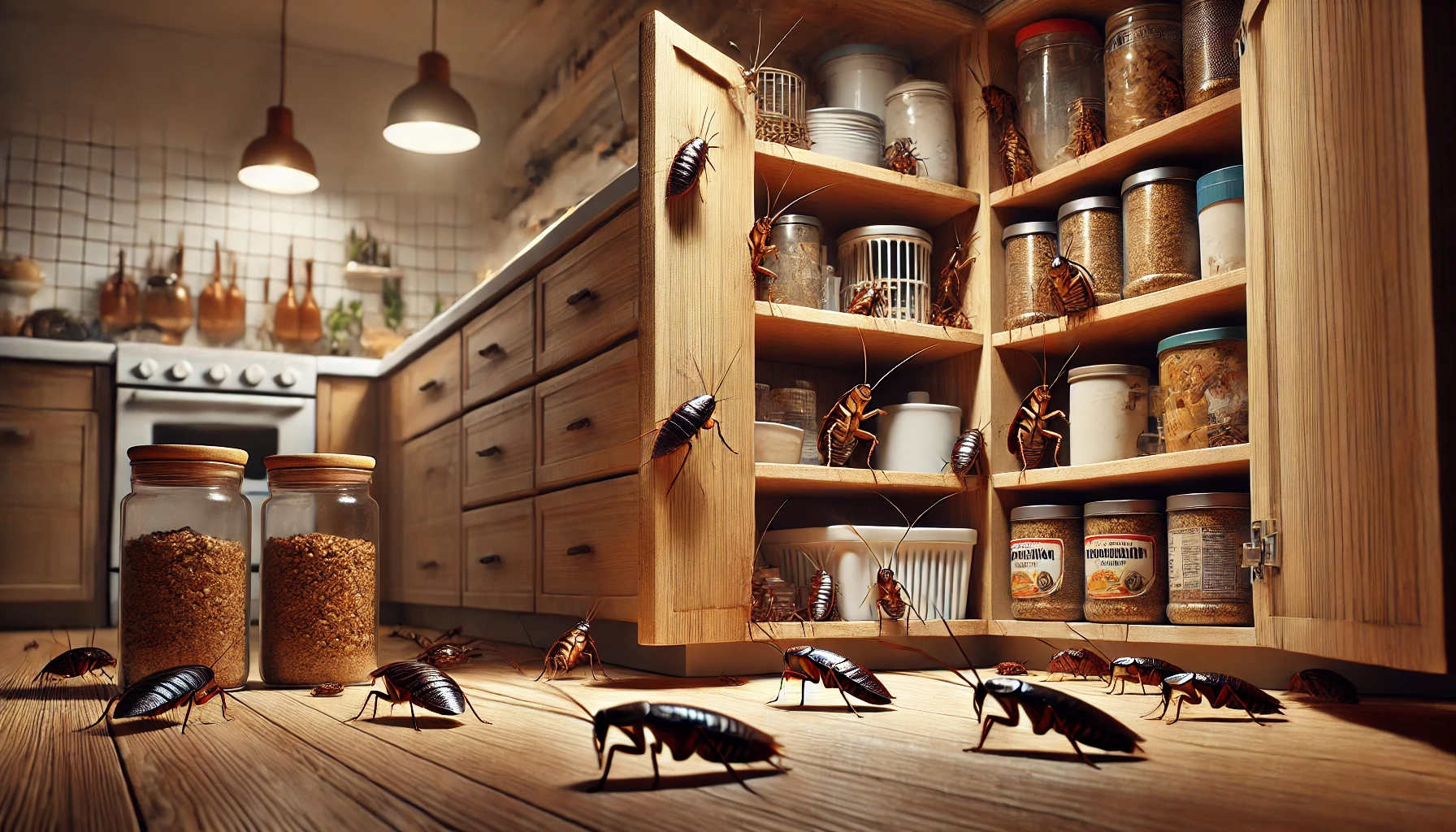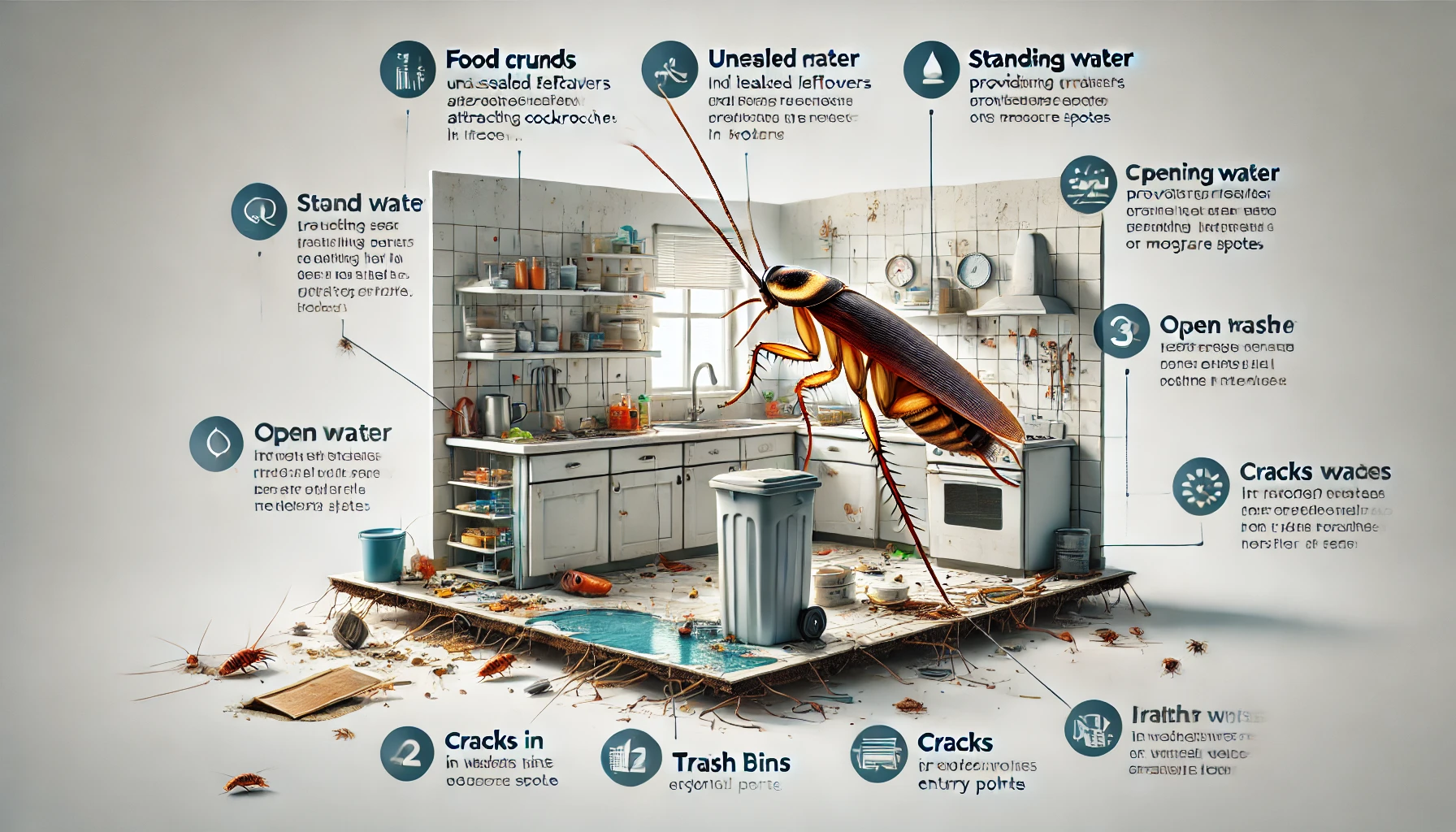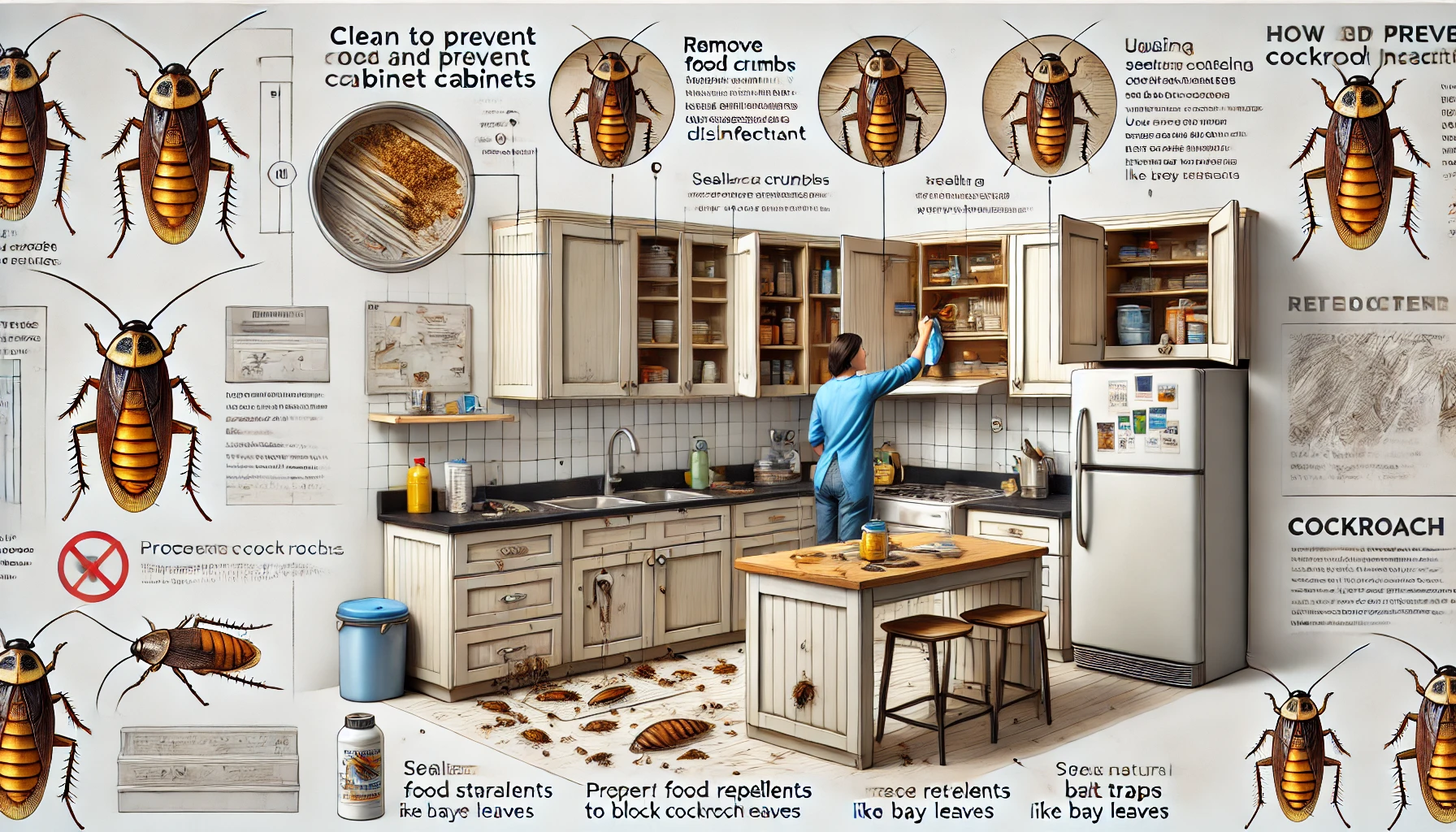Key Takeaways
- Roaches are attracted to moisture, food, and shelter found in kitchen cabinets.
- Prompt action is crucial to prevent health risks from roach infestations.
- Effective removal includes cleaning, sealing entry points, baiting, using traps and powders, and eliminating food and water sources.
- Consistent cleanliness, proper food storage, moisture control, sealing cracks, and natural deterrents help keep roaches away permanently.
- Professional pest control should be considered for stubborn infestations.
 Cockroaches are those unwanted pests in any home, we encounter them in our kitchen cabinets that can be particularly distressing. Beyond their unsettling appearance, cockroaches pose serious health risks by contaminating food and surfaces. U.S. households frequently encounter these resilient pests, making a robust response essential.
Cockroaches are those unwanted pests in any home, we encounter them in our kitchen cabinets that can be particularly distressing. Beyond their unsettling appearance, cockroaches pose serious health risks by contaminating food and surfaces. U.S. households frequently encounter these resilient pests, making a robust response essential.
This guide provides practical and effective strategies to help homeowners eliminate roaches from kitchen cabinets and ensure they don’t return.


Not getting a solution?
Get your free pest control estimate today!Understanding Why Roaches Infest Kitchen Cabinets
- Cockroaches grow in environments presenting them easy access to food, moisture, and shelter—three features your kitchen cabinets conveniently provide. Here are the main reasons roaches invade cabinets:
-
Food Availability: Crumbs, spilled food, grease, and stored pantry items attract cockroaches looking for easy meals.
-
Moisture Sources: Leaking pipes, watery areas beneath sinks, or moisture buildup create the perfect humid environment for roaches.
-
Shelter and Breeding Grounds: Cabinets provide dark, quiet, and enclosed spaces—ideal for roaches to hide, breed, and multiply rapidly.
Why Cockroaches Are Dangerous
- Cockroaches aren’t merely unpleasant—they pose genuine health threats. Some primary concerns include:
-
Disease Transmission: Roaches carry pathogens like salmonella, E. coli, and staphylococcus, contaminating food and surfaces they come into contact with.
-
Allergies and Asthma: Their droppings, shed skins, and body parts can trigger allergic reactions and worsen asthma, especially in children or sensitive individuals.
-
Food Contamination: Cockroach droppings can spoil stored foods, posing serious health risks if ingested.

Detailed Steps to Eliminate Cockroaches in Kitchen Cabinets
Step 1: Completely Empty and Clean Cabinets First, clear out your kitchen cabinets entirely. Inspect food packaging and discard anything showing signs of roach contamination. Using a vacuum with a hose attachment, thoroughly remove food debris, cockroach droppings, eggs, and other pest evidence.Follow this by cleaning all surfaces with hot soapy water, vinegar solution, or an antibacterial cleaner, paying close attention to corners, hinges, and crevices. Allow the cabinets to dry thoroughly before proceeding.
Step 2: Seal Entry Points
- Next, carefully inspect cabinets for cracks, holes, or gaps where cockroaches could enter or hide:
- Inspect cabinets for cracks, holes, or gaps where cockroaches could enter or hide.
- Use silicone caulk to seal small cracks along edges and corners.
- Apply expanding foam for larger holes around plumbing or cabinet fixtures.
- Sealing these entry points significantly lowers future infestations.
Step 3: Use Cockroach Baits Effectively
- Cockroach bait gels are the most effective DIY method to eliminate cockroaches:
- Place pea-sized drops of bait gel along cabinet corners, hinges, and suspected nesting areas.
- Apply bait on small pieces of wax paper for easy cleanup and replacement.
- Check bait placement regularly and replenish every 2-3 weeks until roach activity stops.
- Bait gels work effectively as roaches consume the poison and spread it within their colony.
Step 4: Set Roach Glue Traps
- Sticky traps, or glue traps, are valuable for both eliminating and monitoring cockroach infestations:
- Position glue traps inside cabinets, especially in corners and along back walls.
- Regularly inspect traps to monitor roach population and replace them as needed.
- Glue traps help capture roaming roaches and assess the severity of the infestation.
Step 5: Use Natural and Chemical Powders
- Another effective tactic is using powders like boric acid or diatomaceous earth (DE):
- Apply boric acid or diatomaceous earth (DE) along cabinet edges, corners, and hidden spaces.
- Keep powders dry and avoid placing them where food or dishes may come into contact.
- Boric acid poisons roaches upon ingestion, while DE dehydrates them, leading to death.
- Ensure powders are kept away from pets and children.
Step 6: Eliminate Food and Water Sources
- Removing enability to food and water is essential to getting rid of cockroaches:
- Store all pantry items in airtight containers.
- Clean spills immediately and thoroughly.
- Regularly take out the trash and use bins with secure lids.
- Keep sink areas and cabinets dry, addressing any leaks promptly.
Step 7: Consistent Monitoring and Treatment
- Cockroach elimination requires ongoing attention:
- Conduct regular flashlight inspections for roaches or their droppings.
- Maintain routine cleaning, removing crumbs and grease regularly.
- Reapply bait gels and replace glue traps periodically.
- Ongoing monitoring ensures long-term success in roach control.
Step 8: When to Seek Professional Help
- If roaches problem still persists despite all of your continuous efforts, then it might be time to hire professional pest control services. Professionals offer:
- Consider professional pest control if roach problems persist despite continuous efforts.
- Professionals use stronger insecticides and offer customized treatment plans.
- They provide guarantees or follow-up services for long-term effectiveness.
- Professional help is recommended for large infestations or recurring issues.

Proven Prevention Methods to Keep Roaches Away
- Once you’ve successfully removed roaches, prevention is the next critical step. Integrate these proactive strategies into your routine:
-
Consistent Cleanliness: Regularly deep-clean cabinets and kitchen surfaces to eliminate food crumbs and grease that attract roaches.
-
Proper Storage: Always keep food sealed and secure in airtight containers to prevent roach infestations.
-
Regular Maintenance: Check plumbing regularly to prevent moisture buildup and fix leaks immediately, as roaches thrive in damp environments.
-
Entryway Control: Inspect and seal cracks, crevices, and other potential entry points to block roaches from entering your home.
-
Natural Repellents: Use roach-repelling smells such as peppermint oil, bay leaves, citrus, or eucalyptus to discourage pests from invading cabinets.
If you feel things have gone out of control, it is advised to contact pest control professionals. Our team can provide a customized approach to protect your home effectively.
Visit our Species, Control, and DIY Guide sections for additional resources on cockroach and ways to tackle a cockroach infestation.





